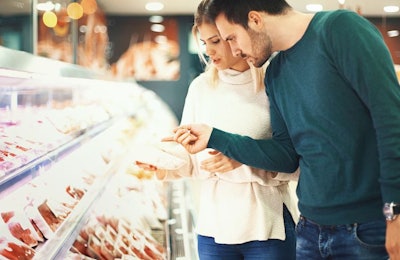
Retail food sales remain strong while the foodservice industry is seeing a faster-than-expected recovery, according to Rabobank’s August 2020 North American Agribusiness Review.
The novel coronavirus (COVID-19) pandemic has boosted retail food sales, which peaked in March and April, the report said. In July, it was up 12.8%, marking the fifth consecutive month of double-digit growth as consumers consume more meals at home.
U.S. foodservice sales are recovering faster than expected; July sales were down 17.5% compared with April, when sales were down 52.5%. Quick-service restaurants are reporting sales at or above year-ago levels. Full-service and fine dining establishments are also seeing a solid recovery.
However, Rabobank points out that, without additional government stimulus payments to individuals, recovery may stall.
Poultry slaughter down
Total poultry slaughter is averaging 4% lower than last year, and ready-to-cook chicken is also down 4%. Live weights are flat with year-ago levels, at 6.3 pounds per bird. Average chick placements were down 2% in the past four weeks. Chicken prices in the U.S. have stabilized in recent weeks while, in Mexico, chicken prices have recovered more quickly.
“While expected increases in production and large competing protein supplies are expected to limit further gains, retail support for chicken has been good, and stocks remain at relatively low levels,” the report said.
Pork slaughter near normal
Pork slaughter levels have returned to normal, after processing plant slowdowns and shutdowns in the spring, but labor challenges remain. Pork carcass values have begun to recover from July lows, but are still below average.
U.S. pork exports have softened, and demand is expected to be weaker in the second half of 2020. Notably, exports to China and Japan were down.
“With weaker GDP growth expected in most key markets and improved pork domestic availability in China, we are less optimistic about exports over the balance of the year and now project only 10% growth vs. 2019,” the report said.
‘Incredible recovery’ in cattle slaughter
Rabobank says there has been an “incredible recovery in fed cattle slaughter,” which has reached 97-98% of year-ago levels. Slaughter capacity was reduced in March and April, and those backlogged cattle are expected to make up a large portion of slaughter from August to October. The backlog has also caused increased carcass weights, approximately 25 pounds higher than a year ago, and increased beef production, up 2-3% from a year ago. Carcass weights are expected to normalize by October, and total beef production is expected to be up 1-1.5% in 2020.
Dairy demand elevated
Demand for dairy products remains elevated, and demand in the foodservice sector – especially fast food – is gradually recovering. Class III milk pricing are coming down from record levels in June and July, while strong sales “will encourage milk production growth to stay positive for the remainder of the year, but regional surplus in some areas may cause some production growth restrictions from cooperatives and processors to return.”
View our continuing coverage of the coronavirus/COVID-19 pandemic.

















